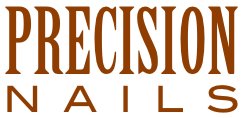Article Published in Stylist Magazine, April 2012
The nail industry could use some good news, and I certainly don’t mean the introduction of another gel polish brand. Don’t get me wrong; I appreciate what reputable and innovative manufacturers contribute to our industry. But what manicurists really need we can’t buy from manufacturers, and that’s leadership. Despite being a growing, multi-cultural industry, we lack direction and have a serious image problem. Is it just me, or does it seem that most publicity about nails is bad (toxic chemicals, dirty salons, deadly pedicures, poor customer service, human trafficking, etc.)? Well-intentioned efforts to educate consumers can inadvertently damage our image further when not handled carefully.
Of course, it’s not just manicurists that suffer bad publicity. And the publicity doesn’t even have to be “real.” Have you seen the suggestive ads for the The Client List, an upcoming fictional television series made for Lifetime starring Jennifer Love Hewitt? The insulting characterization of massage therapists as sex workers has generated protests and online petitions to boycott. In defense of the show, Hewitt has been quoted as saying: "I feel badly that they feel offended, but I respect that people need to say what they need to say . . . At the end of the day, though, it's a television series. I'm not saying every massage parlor in the world gives happy endings, nor do I know which ones do, but it is a part of our society. And even if it wasn't, it's just a part of our story. It's entertainment."* I’m not sure that explanation would make me feel any better if I were a (therapeutic) massage professional.
For better, and more often worse, media portrayals of manicurists both reflect and influence how we’re perceived. Consider these characterizations, not so much for their accuracy, but for the powerful messages they convey about our career choice:
- Madge the Manicurist, played by accomplished actress Jan Miner, promoted the use of Palmolive dishwashing liquid with the assurance “You’re soaking in it.” She never lacked for clients at Salon East Beauty Parlor and had a longer career than most manicurists (1966-1992).
- Ms. (Bunny) Swan, played by Alex Borstein on MADtv, worked at the Gorgeous Pretty Beauty Nail Salon. Though somewhat ambiguous, her ethnicity was often perceived as Asian. She was known for her questionable language skills and frumpy work attire. Who can forget that colorful checkered smock with foot appliques that always covered her floral print dresses?
- Paulette Bonafonté, played by Jennifer Coolidge in Legally Blonde, was the insecure and unfashionable manicurist who befriends law student Elle Woods (Reese Witherspoon). She’s best remembered for learning the “bend and snap” to attract a man, not so much for doing great nails.
- Anjelah Johnson became famous for her stand-up routine in which she described having her nails done by “Tammy,” a Vietnamese manicurist at Beautiful Nail. Johnson joined the cast of MADtv as a featured player and her videos have more than 50 million views on YouTube.
- Katie Cazorla stars in Nail Files, the first reality show based in a nail salon. While not a licensed manicurist herself, she and her staff at The Painted Nail (located in Sherman Oaks, California) earned ratings worthy of a second season premiering this summer.
Our responsibilities as licensees do not change according to our backgrounds or circumstances; we all must follow the applicable laws and regulations. Anyone who wants to be a nail professional and/or salon owner must meet the minimum standards, whatever those may be in your particular state. If those standards do not prevent incompetent licensees from entering the workforce or ignorant owners from operating salons, don’t blame the licensees, the owners, the beauty schools or the examination. The fault lies with the governmental agency that established the standards in the first place. Mediocrity should not be the standard; we should expect more of ourselves and consumers deserve better. The good news? California’s state board recently elected a licensed manicurist and salon owner, Christie Truc Tran, as president. With her leadership, I expect that we’ll make significant progress in unifying as nail professionals and advancing our best interests.
* Reported by Jay Bobbin of Zap2it on March 1, 2012.
By Jaime Schrabeck, Ph.D.




